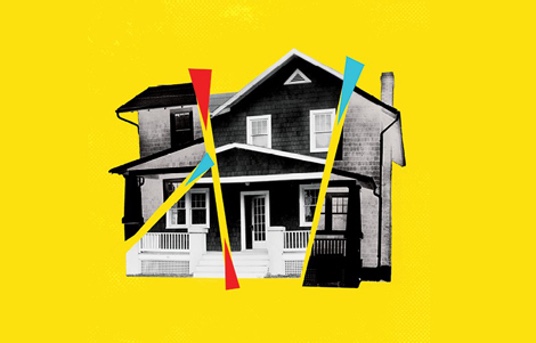Wed 12/7-Sat 12/17
It’s hard to believe now, but house deeds once had something called “restrictive covenants” which dictated that homeowners could not sell their homes to certain “types” of people. Back in my hometown Chicago from the 1920s through the 1940s, that usually meant African-Americans although it might include Jews as well. I would not be surprised if my parents’ home, purchased on the south side of Chicago in 1949, included such a clause, although by the dawn of the ’50s they were disappearing.
Such covenants led to an overflow of people packing into certain neighborhoods we came to call “ghettos” as the Great Migration continued northward from Mississippi and Alabama. Eventually, this sea of humanity flowed over, gradually moving into, and taking over, adjacent neighborhoods as white people fled, thanks to redlining (refusing to make certain loans to certain people in certain areas) and blockbusting (a real estate tactic involving people to sell their homes due to fear of “those people” decreasing their property values).
This led to the Open Housing Marches of the summer of 1966 when the Rev. Dr. Martin Luther King Jr. arrived in Chicago to confront then Mayor Richard J. Daley about the city’s segregated housing. Daley, of course, famously branded him an “outside agitator.”
All of this was background to the late black playwright Lorraine Hansberry’s seminal 1959 play A Raisin in the Sun. It takes place in Woodlawn, the neighborhood immediately to the north of the one I grew up in. Ten years later, my old neighborhood was almost all black. One of the families that moved in during that time was Michelle Obama’s.
Hansberry died at the tragically young age of 34 in 1965; she never even lived to see Dr. King’s marches in her hometown. But in 2010, white actor/playwright Bruce Norris, who went to college at Northwestern University and developed many of his plays at Chicago’s Steppenwolf Theatre, picked up the story in his play Clybourne Park, which won the Pulitzer Prize for Drama and the Tony Award for Best Play. His first act is a prequel to the events depicted in A Raisin in the Sun; his second is set in the same home 50 years later.
The Case Western Reserve University/Cleveland Play House (CWRU/CPH) MFA Acting Program class of 2018 will launch their 2016-17 season with Clybourne Park, directed at the program’s associate director Donald Carrier.
“I was attracted to Clybourne Park for a number of reasons,” says Carrier in the play’s press release. “The play’s themes regarding race, class, gentrification, and territoriality are part of a rigorous and current national dialogue. Meanwhile, Norris’ ability to approach these serious issues satirically, dramatically, and comically is both refreshing and at times bracing.”
Each performance will have a pre-show conversation 45 minutes before curtain, and there will be talkbacks Fri 12/9 @ 9:30pm, Sat 12/10 @ 5pm and Fri 12/16 @ 9:30pm. Performances take place at the Helen at PlayhouseSquare. Tickets for Wednesday and Thursday performances are $15; tickets from Friday and Saturday are $20.
